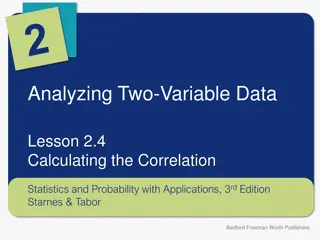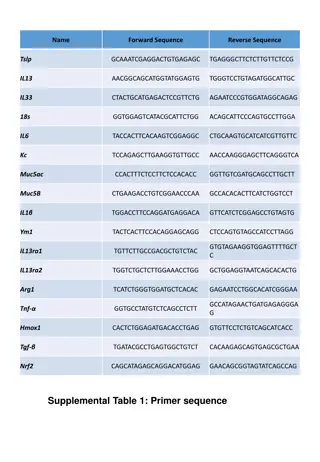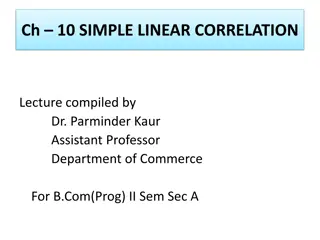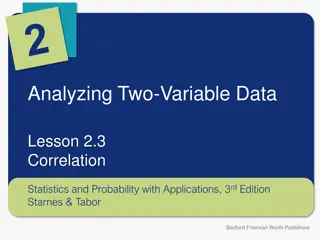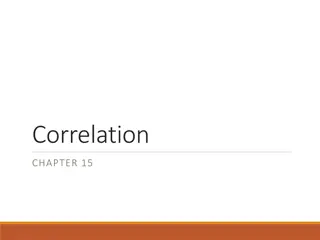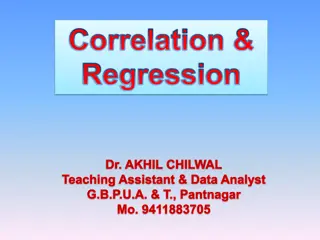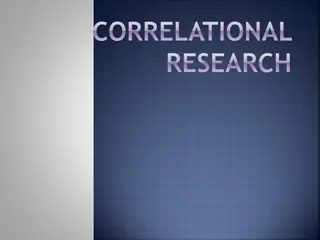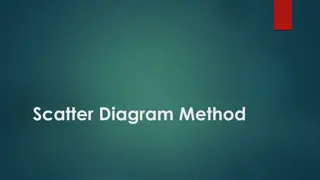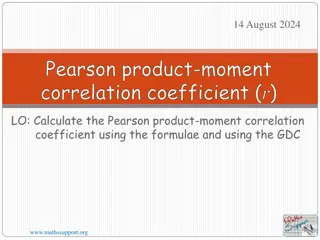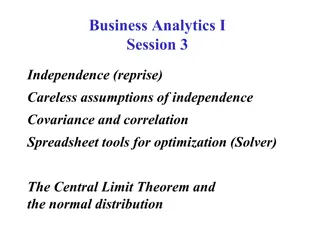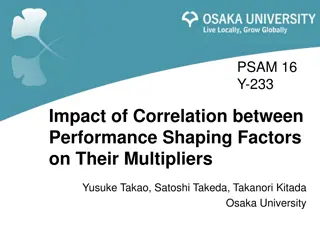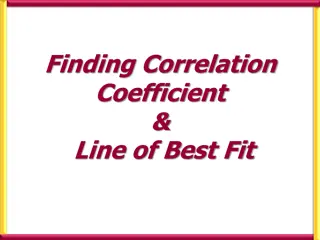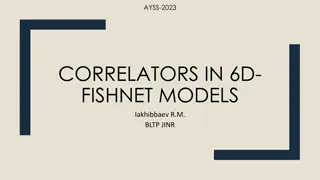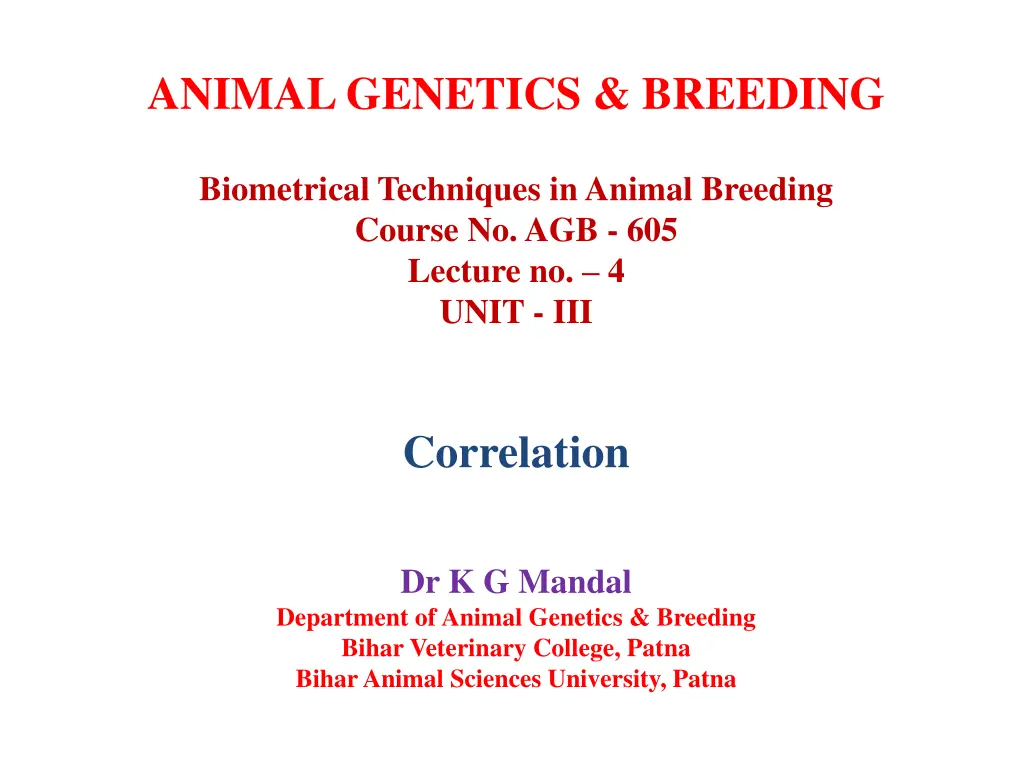
Understanding Correlation in Animal Genetics and Breeding
Explore the concept of correlation in animal genetics and breeding, including its types, significance, and the coefficient of correlation. Learn how variables relate to each other and the impact on breeding practices.
Download Presentation

Please find below an Image/Link to download the presentation.
The content on the website is provided AS IS for your information and personal use only. It may not be sold, licensed, or shared on other websites without obtaining consent from the author. If you encounter any issues during the download, it is possible that the publisher has removed the file from their server.
You are allowed to download the files provided on this website for personal or commercial use, subject to the condition that they are used lawfully. All files are the property of their respective owners.
The content on the website is provided AS IS for your information and personal use only. It may not be sold, licensed, or shared on other websites without obtaining consent from the author.
E N D
Presentation Transcript
ANIMAL GENETICS & BREEDING Biometrical Techniques in Animal Breeding Course No. AGB - 605 Lecture no. 4 UNIT - III Correlation Dr K G Mandal Department of Animal Genetics & Breeding Bihar Veterinary College, Patna Bihar Animal Sciences University, Patna
Correlation Correlation: Association or relationship or interdependence between two or more variables. Variables: Continuous and discrete Attributes: qualitative traits Types of correlation 1.According to direction: (i) Positive (ii) Negative (iii) Zero
2. According to number of variables: (i) Simple (ii) Multiple (iii) partial 3. According to proportionate change between two variables: (i) Linear (ii) Non-linear
(A)According to direction: (i) Positive correlation Both the variables move in the same direction. Example height and weight (ii) Negative correlation Both the variables move in direction. Example Milk yield & fat percentage the opposite
(iii) Zero correlation One variable increases or decreases but the other variable remains constant. Example: Variable X 2, 5, 6, 8, 10, 12 Variable Y 5, 5, 5, 5, 5, 5
(B) According to no. of variables: (i) Simple only two variables are studied at a time. (ii) Multiple three or more variables studied at a time. Example feed quality, quantity given, feed conversion, body weight, etc. (iii) Partial correlation studied three or more variables but find out correlation between two variables at a time while others kept constant.
(C ) change between variables: (i) Linear - Both the variables move at a constant ratio throughout. Example: X 5, 10, 15, 20, 25 Y 10, 20, 30, 40, 50 constant ratio . (ii) Non-linear Variables do not follow a constant ratio throughout. According to proportionate
Coefficient of correlation: Measures the degree of association or degree of relationship between two variables. Denoted as r , i.e., rxy so that, rxy = ryx Concept given by Karl Pearson.
Methods to estimate coefficient of correlation: 1. Pearsonian method: rxy = Cov.xy / sdx.sdy Cov xy= [ xy ( x)( y)/N] /(N-1) sdx= [[ x2 - ( x)2 ] /N] /N 1 sdy= [[ y2 - ( y)2 ] /N] /N - 1
[xy (x)(y)/N] rXY = ------------------------------------------------------------------------------ [[ x2 - ( x)2 ] /N][[ y2 - ( y)2 ] /N] Where, N = pair number of observation
Properties of correlation coefficient: (i) Ranges from -1 to +1 (ii) Pure number (iii) No unit (iv) + 1 is perfect positive correlation (v) - 1 is perfect negative correlation (vi) when r = 0, it means no correlation (vii) rxy = ryx
Other methods to estimate Coefficient of Correlation: 2. Scatter diagram method 3. Graphic method 4. Rank correlation method 5. Least squares method
Rank correlation: i)It measures the degree of association between the ranks of two variables. ii) Concept given by Spearman. iii) No unit iv) Ranges from -1 to + 1 6 di2 R = 1 - ------------- n(n2 1)
Where, di = xi yi xi = ith rank of x variable yi = ith rank of y variable n = pair number of observation di = 0
Example: AGB 605 Mid- term (x) Rank (Xi) Final (y) Rank (Yi) di = xi yi di2 A B C D E F 60 70 90 65 75 85 6 4 1 5 3 2 58 68 78 88 84 72 6 5 3 1 2 4 0 0 1 4 -1 -2 4 1 -2 16 1 4 Total di = 0 di2= 26 R = 1 - 6*26/6(36 1) = 1 26/35 = (35 26)/35 = 0.25
Standard Error (S.E.) of r : S. E. of r = (1- r2)/ N Probable Error (P.E.) of r : P.E.(r) = 0.6745 (1 r2)/ N If r < PE, there is no correlation. If r > 6PE, the coefficient of correlation is said to be certain and significant.
Test of significance: Coefficient of correlation is tested through t test at N 2 d.f. T- test: t (N-2) d.f. = (r N 2) / ( 1 r2) Interpretation ?
Use of Correlation coefficient: i) For prediction of future performance on the basis of past record. y = Y rSy/Sx(x x) Where, y = predicted value of y y = mean of y r = correlation coefficient x = mean of x Sx & Sy = SD of x and y variable
2. The measures the degree of relationship between two characters. 3. The square of correlation coefficient between breeding value and phenotypic value (r2AP) measures the heritability. 4. It maintains regression. byx = rxy(6y/6x) & bxy = rxy(6x/6y) coefficient of correlation relationship with



